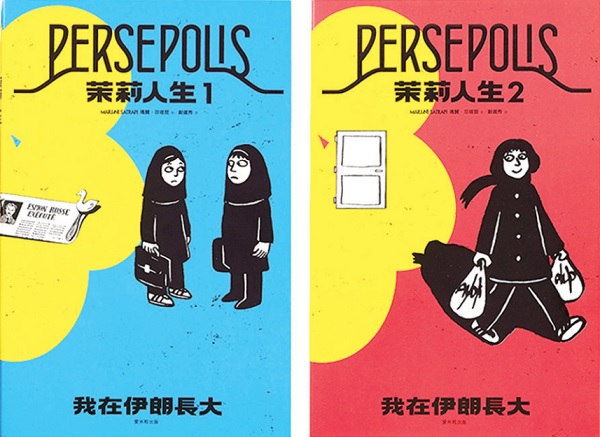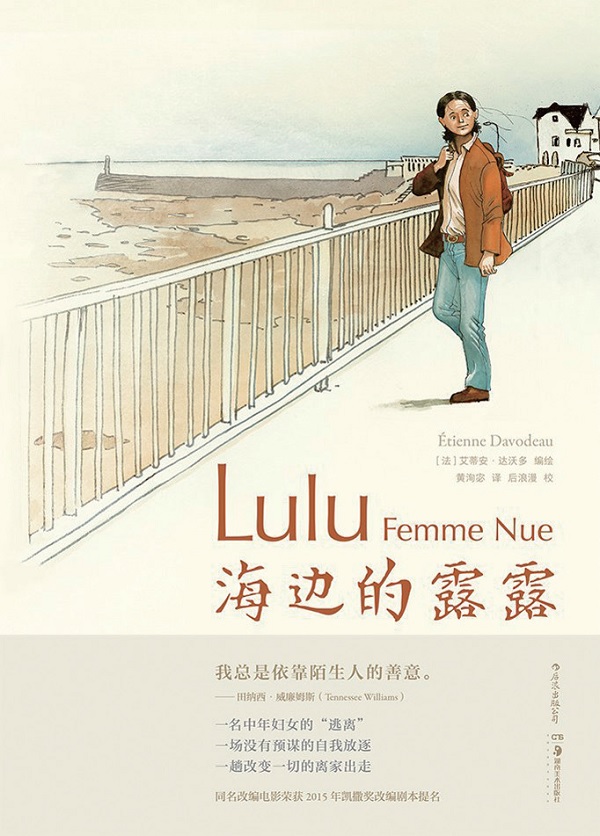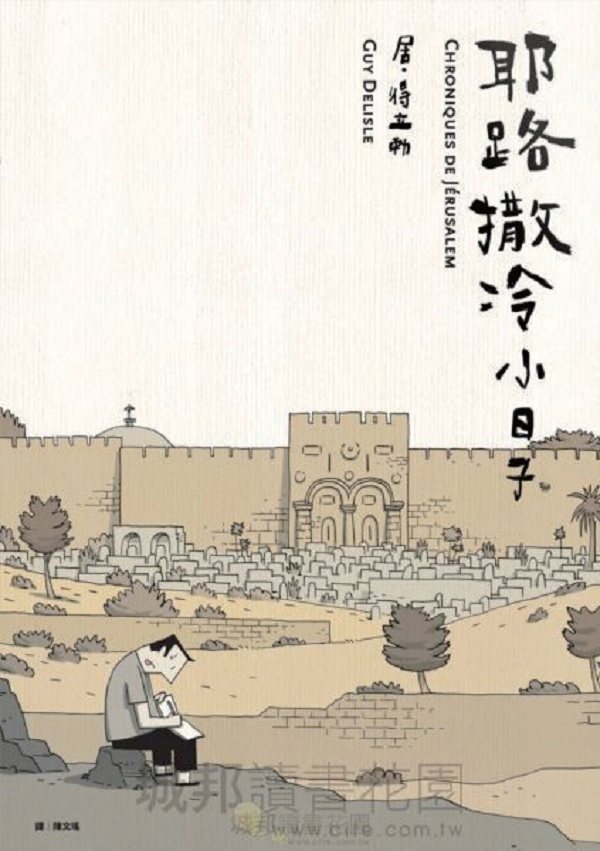The Ninth Art – French Graphic Novel
[Tao Ting Pictures] Graphic Novel Column

American Superman comics and new trend graphic novels, as well as Japan's long-standing comic strips, have captured the attention of global readers on both sides of the Pacific. If we widen our perspective, are there other shining areas on the global comics map? The answer is yes. France, a major European art country, is an example.
French comics from the 20th century (Bands dessinées, abbreviated as BD) has gone through several ups and downs, and the last revival has not declined since the 1980s. The early classics "Heroes of Gaul" or "The Adventures of Tintin" (the original author of the series, Georges Lemy, is actually of Belgian descent, but this set of books was published in French, and the first loyal fans were also in France). It is suitable for all ages and is internationally renowned. , so readers from other countries may not necessarily be aware of the uniqueness of the French comics readership.
Compared with the United States and Japan, French comics pay more attention to the adult market; it is not that there is a lot of violence or eroticism, but the theme, rhythm, and style of the works may not attract children below high school. Any bookstore in France must have a graphic novel section, and its readership spans from childhood, adolescence to adulthood. From subway stations, coffee shops, under umbrellas on the beach, to home benches, the French keep reading, and graphic novels are as common a choice as other types of books.
Clues of National Culture’s emphasis on graphic novels can also be seen from other sources. National cultural units attach great importance to the promotion of comics; the world-renowned La Goulan International Comics Festival; the Louvre Museum’s cooperative relationships with different cartoonists. Due to the status of comics and graphic novels in France, many people call them the "ninth art" of France.
Perhaps because they include adult readers in their early stages of development, French graphic novels more generally explore metaphysical or serious topics: the position and meaning of art, philosophy, religion, politics, etc. The discussion is rooted in the story soil and character dialogue. Compared with the bright and flamboyant style of many American and Japanese comics, the style of French graphic novels tends to be restrained and restrained, and the color palette is either black and white or more calm. The style of many excellent works is more like niche art films or literary essays, with concise and profound meanings in a limited space and a long lasting aftertaste. Or are graphic novels so firmly entrenched in society that they no longer need to shout out to readers to pay attention to themselves?
There are so many French graphic novels and so many representative writers that it is difficult to give a systematic and comprehensive introduction in one article. The following graphic novels are semi-randomly selected works by contemporary masters with travel themes but completely different styles.

▲Because French national culture attaches great importance to graphic novels, any bookstore must have a graphic novel section. Many people call it the "ninth art" of France.
(Image Source:https://bookriot.com/four-great-graphic-novels-french-quatre-bandes-dessinees-fantastiques-en-francais/).
"Jasmine's Life: Growing Up in Iran" (Persepolis)
This memoir by the French-born writer Marjane Satrapi (1969-) is on par with the American documentary classic "Maus" introduced in the column.
Satrapi was born into an aristocratic family. Her maternal grandfather was originally Prince Karza, and her cousin, with whom she had a close friendship, was a dissident politician who lived in exile for many years and was eventually executed. His parents were from an urban class and strongly opposed dictatorship. They often participated in demonstrations and were eager to protect their only daughter. Therefore, the atmosphere at home was as tense as the street. Satrapi grew up during a period of social turmoil in Iran: the Islamic Revolution at the age of 10 (the ultra-conservative fundamentalists came to power in 1979 and began a series of new laws and draconian laws, which comprehensively changed people's lives); the Iran-Iraq War at the age of 12 made civilian life even worse. When she showed her family blood, she secretly took her maid to the streets to protest, shouting "Long Live the Republic" and "Step Down", forcing her parents to make a difficult decision and sent her to Vienna to study when she was 14 years old. The first volume of the memoir describes his childhood and adolescence in Tehran, while the second volume describes the process of studying in a foreign country, returning to his hometown, and leaving his hometown again.
Satrapi is good at combining ancient symbols with daily life, showing children's innocent and enthusiastic view of the current situation, and the people who are ups and downs in the whirlpool of history, culture, and politics. As a child, she often talked to God and dreamed of becoming the first prophetess. Although her religious sentiments were shattered by the tribulations of reality, her pen became a pioneer, creating this memoir of special significance and groundbreaking status.
In modern times, Iran has experienced the impact of Islamic traditional culture and Western modern openness. Through the author Tong Shao, he brings out his thoughts on history, religion, politics, women's rights, etc. in tradition and modernity. This is not a high-minded debate, but a real-life demonstration of how Satrapi and her liberal family were trapped in the cobwebs of the Iranian Revolution and the Iran-Iraq war, and how their parents tried their best to give their only daughter a chance to break free from the cobwebs. Even if she has to pay the price of leaving her overseas at a young age. The farewell scenes at the airport were particularly heartbreaking.

Her artistic style is unique, combining the innocence of cartoons with the traditional Islamic decorative style, making it unforgettable at first sight. She also masters the power of dual narratives of text and pictures. A few pictures can express a complex background and at the same time grasp the inner drama of the characters.
The whole book is colorless, which relatively reduces the excitement of the authoritarian government's suppression of dissidents and the bloody scenes of war. The pictures are only in black and white, but the characters, plots, and themes all have a strong personal touch. No reader will think that this is a monotonous and ordinary story. As the comments say:"The author uses a black and white painting style and simple lines to outline a growth story with changing colors, traveling between the glorious history of modern Iran and the ancient Persian dynasty."
The preface to the satrapi says:"When I chooseexplainCome out with thisWhen I read the story, I knew I could never go back. my storyTownship,In Persepolis, there is the Alberz Mountain covered with misty white snow, and the charming jasmine fragrance on grandma's body.⋯⋯This story tellsexplainfrom Persepolis, the ancient Persian civilization, toThe mystery behind modern Islam. I will always remember grandmaexplainOne thing I have said: You must always be worthy of yourself and always be honest with yourself. "
She later launched the animated version of "Molly's Life", which was nominated for the Academy Award for Best Animation. It is one of the few examples of classic comics being successfully adapted into animation. Through this memoir, Satrapi leaves her innocent childhood that "can never go back", her wandering youth, her relatives and friends who paid the ultimate price for the revolution... forever in the book, impacting readers who open the pages of the book again and again.
"Lulu Femme Nue"

Readers who are used to watching Japanese boy and girl anime and American super comics may have a hard time imagining that an ordinary housewife can become the protagonist of a long graphic novel.
The works of French Mesozoic leader Étienne Davodeau (1965-) span the genres of documentary literature and fiction. Growing up in western France, he was born into a working-class family. His works are good at drawing from daily life, combining various market conditions with experimental novel techniques, paying attention to the joys, sorrows and joys of ordinary people, and unobtrusively bringing out issues such as society, environment, industry and agriculture.
The protagonist Lulu is an ordinary middle-aged woman - neither good-looking nor ugly, neither fat nor thin; she is quiet and silent, and rarely even smiles. After getting married, she left the workplace to serve her violent-tempered worker husband, take care of the housework, and raise three children. She spun like a top in the daily necessities of life, blurring her face and voice. The scenes of her life are so ordinary, as if they are a daily drama. Watching one episode or watching a dozen episodes is the same. Lulu and all the characters are ordinary people, not the handsome men and beauties of idol dramas, and there is no bloody drama.
One day Lulu left home! No reason was given, no one knew where they were going, and no one said when they would return home. Is this the sudden appearance of quicksand in a peaceful life, causing the whole family to never return to its previous peace? Or has everyone misunderstood that Lulu is not a hen who has been on the farm all her life, but a hidden phoenix?
Under Dawendo's gentle and simple writing style, readers follow Lulu and meet strangers one after another. The first pharmaceutical company representative "listened" carefully to Lulu's story and voice, and took her to a seaside town. We couldn't help but smile because of the smile on her face. We were surprised to see her cheating on her with a strange man, and we also wondered: Is she just not looking back?
For such a flat character, Dawendo's writing style brings her to climax one after another. It is an ode to the lives of small people and a broader alternative interpretation of "Turning a Detour". This is a completely adult-led story that can only be experienced by adults. Why do ordinary characters and trivial events that happen over the course of a few weeks attract readers to keep reading?
The plot is cleverly designed, the characters' perspectives change naturally, and the images carefully capture the characters' expressions and personalities. "Runaway" also reflects the undercurrent of a peaceful life, stimulating readers' empathy and curiosity: how far will they go, what will they encounter, and finally Will you go home...
The author's creativity drives the story: the plot comes from conversations and narrations from family and friends, with little direct inner monologue from Lulu. The reader unknowingly enters the drama and ponders along with these supporting characters: What happened to this Lulu? The plot is advanced through the discussions of "others", and the protagonist does not come out to finalize the story. The "watching the show" perspective resonates with readers. These supporting characters are not passers-by, but her close friends and family members, which eliminates the element of gossip and increases the invitation for readers to reflect on whether there are similar cases in themselves or around them.
American commentators put it accurately:"The painting style is a typical French comic style. It may seem inconspicuous, but it is supported by profound skills. It gives the work a sense of calm. All the characters and readers seem to be waiting with bated breath for something. What are they waiting for? This story will give you an answer. Every reader can find what he wants."
The Lulu portrayed by Dawendo not only touches the heartstrings of many ordinary readers, but also receives professional recognition. He won consecutive comics awards. Later, "Lulu on the Shore" was adapted into a movie of the same name and was nominated for the 2015 Cesar Award for adapted screenplay. A recent highlight is the documentary Les Ignorants: Récit d'une initiation croisée.
Chroniques de Jérusalem

It may not be easy for ordinary people to connect comics that don’t feel very serious with relatively serious reportage literature. But graphic novelists have proven time and time again that this flexible medium can carry and express complex issues and messages.
Guy Delisle (1966-), a cartoonist who immigrated to France from Canada, worked in various parts of Europe and Asia due to his participation in cartoons, and published a semi-autobiographical travel report in the form of a graphic novel: "Shenzhen First Experience" (Shenzhen) "Pyongyang" was widely praised. Later, because their spouse worked for the humanitarian organization "Doctors Without Borders", they lived in Myanmar for a year, which gave birth to "Burma Chronicles".
In 2008, a family of four came to Israel. His wife's job in Gaza was dangerous and busy, and she could not return to the East City of Jerusalem where she lived every day. Delile, who is self-employed, acts as a day-to-day dad to two small children. When his children were in kindergarten, he took the time to travel around the Holy City with his sketchbook. He witnessed the smoke and bombs and the fighting almost reaching his doorstep, and also had the opportunity to chat with neighbors and new friends from Christian, Jewish, and Islamic backgrounds.
Particularly impressive were his friendships with Lutheran ministers. The pastor did not forcefully preach the gospel. Instead, he listened and answered his questions. When he learned of his difficulty in finding a quiet creative space, he took the initiative to clear out an unused room in the church bell tower and provide it as a studio for free. The pastor's tenderness to the catechumens and his generosity to the literary and artistic people are enviable. His generosity created a small oasis for Israel in the sandy and smoke-filled sky of Delir.
Delile's graphic reports are composed of a series of humorous life stories. On the surface, they seem casual and random, without certain logic or organization. However, these slices of life are combined to reveal the relationship between ancient religions and modern times in a desert country that has been difficult to stabilize for thousands of years. In a holy city where the political power is in turmoil day and night, a Western atheist is surprised, puzzled and moved.
At the end of his sojourn, he reflected: "It's so easy to fight when you reduce the other person to a label or only see them from one perspective." Extending from this point, the price of peace is the willingness to see each other from multiple perspectives and the willingness to listen. and dialogue. How difficult a task it would be without true humility, without the transcendent love of Jesus?
Delile, who has received recognition from many awards, won the Golden Beast Award at the Angouleme International Comics Festival in France for "Little Days in Jerusalem" and once again entered the bestseller list in Europe and the United States. He positioned his work this way:"Most of my travel notes are composed of short stories. When I travel, scenic spots and historical sites are not the only thing that interests me. Chance encounters between people are even more precious."
Voice outside the picture
For a long time, I believed that literary and artistic creation was, to a large extent, a lonely journey of one’s mind and writing. In recent years, I have been more involved in information and talked with the younger generation, and I have realized that the planned and systematic intervention of a country's government can often create a friendly soil and climate for creators, and they can see fruitful results in the long run. The export of Korean TV dramas and Japanese animations to other places is related to the promotion and support of the country, turning a small country into a cultural soft power power. Of course, in order to truly encourage creators and produce good works, government support must be moderate, so as not to turn creators into propaganda machines and produce a bunch of model dramas.
The flourishing of French graphic novels is also inseparable from the encouragement of the government and the years of promotion by dedicated people in national art museums. In other words, these graphic novelists do not work alone, but are supported by various resources and a large and mature readership.
This makes me dream:The Chinese church, as the kingdom of God on earth, if it is willing to create a small image for ChristiansexplainHome provides resourcesand pray, given time, in the small Chinese-language images that have shown new growthexplainIn the garden, maybeIs there a creator who grows into a tree and points to the sky for the gospel of Jesus Christ?
bibliography:
"Jasmine's Life: Growing Up in Iran", Mazen Satrapi, translated by Yu Chixiu, 2019, Aimili, Taipei.
"Lulu on the Beach" by Etienne Davodeau, translated by Huang Xunmi, 2019, Hunan Fine Arts, China.
"The Ignorant: The Story of a Cartoonist and a Winemaker Enlightening Each Other," by Etienne Davendeau, translated by Chen Zhenmei, 2017, Taipei, Taipei.
"Little Days in Jerusalem", by Delir, translated by Chen Wenyao, 2020, Facebook, Taipei.
Huang Ruiyi, holds a bachelor's degree in library science from National Taiwan University and a Ph.D. in Chinese education from Ohio State University, specializing in children's and adolescent literature. He has worked in public and private primary and secondary schools in Southern California for many years. He is currently the director of the International Student Department of Youxi Christian School and a senior staff member and teacher of Genesis Literary Training Bookstore. Articles are scattered in Taiwan and North American Christian publications. In the past eight years, he has been the author of two columns, "Awkward Youth Travel" and "Building a Book Bridge over Bad Water" in Taiwan's "Campus" magazine. Participated in the Fairy Tale Lecture Series of the Far Eastern Broadcasting Corporation. I continue to expand my reading horizons with my two older children who love to read.
